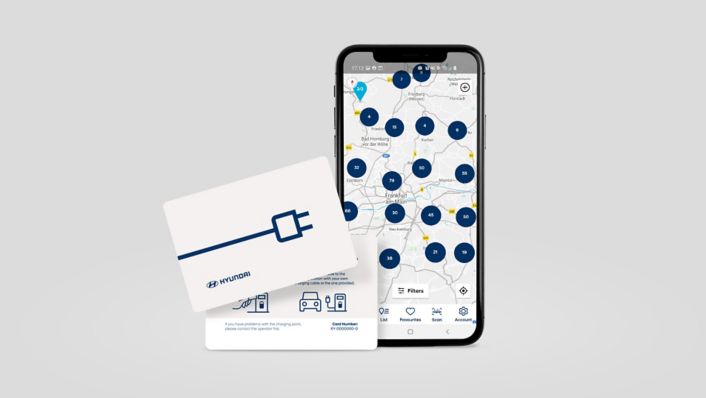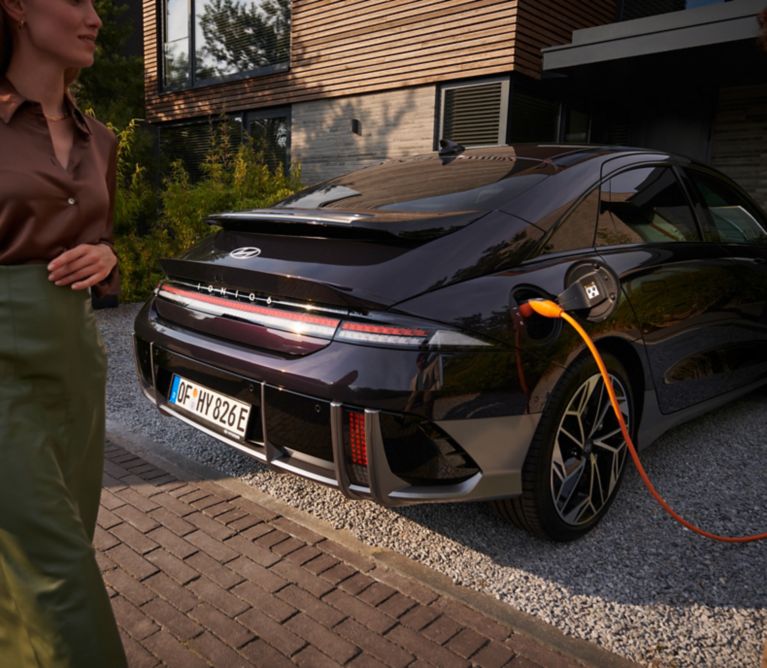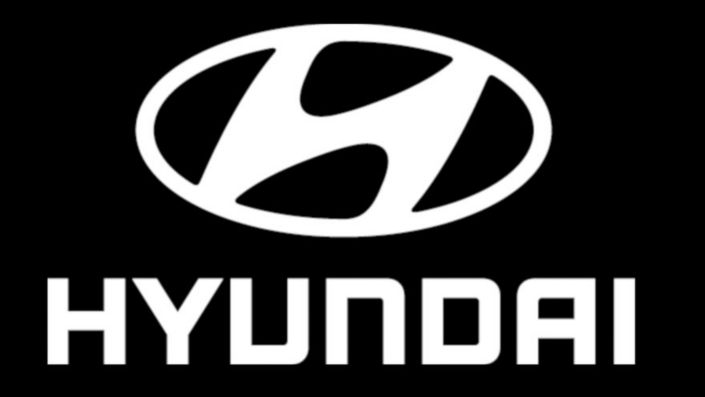- Automated authentication without app or charging card offers customers seamless EV charging experience
- Charging session automatically starts upon plugging in EV at compatible charging point
- Hyundai rolls out first Plug & Charge-enabled models, starting with IONIQ 6
Press material
-
Download
-
Images
Hyundai Motor has started to roll out its first models equipped with Plug & Charge, saving customers time and effort thanks to automated authentication. Removing the need for an app or charging card, this function – in combination with Hyundai’s pan-European public charging service, Charge myHyundai – makes public charging even more convenient and secure.

Seamless customer journey
Plug & Charge creates a smoother public charging experience for users. Once Hyundai customers have enabled the function in their Charge myHyundai account, a contract certificate will be installed on their vehicle the first time they plug it into a Plug & Charge-enabled charging point. The installation takes approximately ten seconds and will ensure that future charging sessions commence automatically.
Plug & Charge enables automated authentication through the integrated communication between the vehicle and the charging point over the charging cable. Without the need for an app or a charging card for authentication, the flow of electricity begins once the Plug & Charge-enabled vehicle is plugged in. By removing the need for manual authentication, Hyundai is making charging even easier for its customers.
With Charge myHyundai, billing is simplified as well. Even with multiple charging sessions across various charging point operators, customers still receive one monthly invoice.

Secure charging experience
To protect the stored contract certificate and the communication between the vehicle and the charging infrastructure from manipulation, the Plug & Charge solution, supported by the vehicle and charging point, functions according to the high-security, encrypted ISO 15118 standard. This is guaranteed by Hubject, the operator of the Plug & Charge ecosystem used by Hyundai.
For the function to work properly, the vehicle and charging point must be Plug & Charge-capable. IONIQ 6 is the first Hyundai vehicle that will be Plug & Charge-ready. IONITY and Aral Pulse are two operators that offer Plug & Change-capable charging points in Europe. More charging point operators will follow.

Half a million charging points with Charge myHyundai
Hyundai Motor Europe has proactively partnered with charging solution providers, including Digital Charging Solutions, to guarantee that its EV customers have access to a reliable charging network across the continent. Recently, Charge myHyundai reached a milestone: more than half a million charging points across 30 countries throughout Europe, underlining Hyundai’s commitment to the future of electrified mobility.
Charge myHyundai optimises the entire charging experience by giving Hyundai’s EV customers access to one of the most expansive public charging networks in Europe. Drivers of Hyundai EVs also benefit from different tariffs for various driving needs, straightforward access with a single charging card, the Charge myHyundai app, and now, Plug & Charge, as well as one monthly invoice for all charging sessions.
Along with an easy search function for charging points, including those capable of Plug & Charge, Charge myHyundai app users can benefit from its navigation function, apply filter options – such as plug type, charging speed and access type – and profit from real-time updates on charging fees and availability.
Disclaimer: CO2 and emissions data
- Electricity consumption combined for the Hyundai IONIQ 6 53 kWh with 2WD in kWh/100 km: 13.9; CO2 emissions combined in g/km: 0 (WLTP)
- Electricity consumption combined for the Hyundai IONIQ 6 77.4 kWh (18” alloy rims) with 2WD in kWh/100 km: 14.3; CO2 emissions combined in g/km: 0 (WLTP)
- Electricity consumption combined for the Hyundai IONIQ 6 77.4 kWh (20” alloy rims) with 2WD in kWh/100 km: 16.0; CO2 emissions combined in g/km: 0 (WLTP)
- Electricity consumption combined for the Hyundai IONIQ 6 77.4 kWh (18” alloy rims) with 4WD in kWh/100 km: 15.1; CO2 emissions combined in g/km: 0 (WLTP)
- Electricity consumption combined for the Hyundai IONIQ 6 77.4 kWh (20” alloy rims) with 4WD in kWh/100 km: 16.9; CO2 emissions combined in g/km: 0 (WLTP)
- The all-new Kona Electric is not currently available for sale. CO2 values for this model have not yet been determined.
- Electricity consumption combined for the Hyundai IONIQ 5 58 kWh with 2WD in kWh/100 km: 16.7; CO2 emissions combined in g/km: 0 (WLTP)
- Electricity consumption combined for the Hyundai IONIQ 5 58 kWh with 4WD in kWh/100 km: 18.1; CO2 emissions combined in g/km: 0 (WLTP)
- Electricity consumption combined for the Hyundai IONIQ 5 77.4 kWh (19” alloy rims) with 2WD in kWh/100 km: 17.0; CO2 emissions combined in g/km: 0 (WLTP)
- Electricity consumption combined for the Hyundai IONIQ 5 77.4 kWh (20” alloy rims) with 2WD in kWh/100 km: 18.0; CO2 emissions combined in g/km: 0 (WLTP)
- Electricity consumption combined for the Hyundai IONIQ 5 77.4 kWh (19” alloy rims) with 4WD in kWh/100 km: 17.9; CO2 emissions combined in g/km: 0 (WLTP)
- Electricity consumption combined for the Hyundai IONIQ 5 77.4 kWh (20” alloy rims) with 4WD in kWh/100 km: 19.1; CO2 emissions combined in g/km: 0 (WLTP)
- IONIQ 5 N is not currently available for sale. CO2 values for this model have not yet been determined.
- IONIQ 7 is not currently available for sale. CO2 values for this model have not yet been determined.











